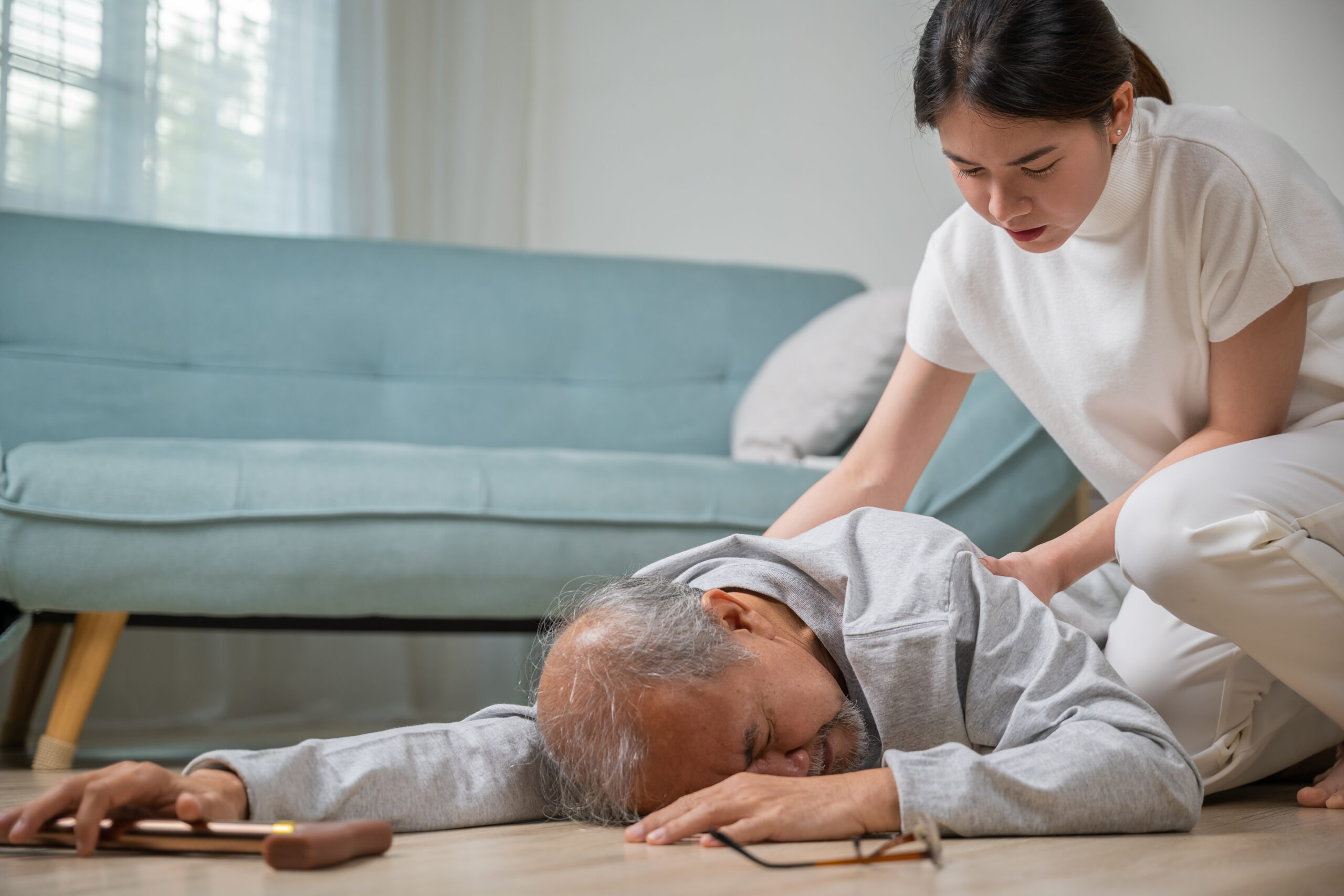Fall prevention tips: Learn How to Make Your Home Safer for Senior Living

As we age, the risk of falling becomes an increasingly significant concern. According to the Center for Disease Control and Prevention (CDC), falls are the leading cause of injury-related deaths among older adults. The good news, however, is that many falls can be prevented with simple modifications to your living space. Our EverHome Columbia program was designed to keep seniors safe and comfortable while also remaining independent at home. Let’s dive into our top fall prevention tips to help you create a safer environment for safer senior living. By implementing these strategies, you can reduce the risk of falls and maintain your independence for longer.
Declutter Your Living Space
The first step in creating a safer home is decluttering. Over time, it’s easy for our homes to accumulate items, creating potential hazards. Begin by going through each room and removing any unnecessary items or obstacles from walkways and living areas. Pay close attention to high-traffic areas, ensuring there are clear paths for easy navigation. This includes removing loose rugs, electrical cords, and any other tripping hazards.
Proper Lighting
Inadequate lighting can significantly increase the risk of falls, especially in dimly lit areas. To address this issue, install brighter bulbs throughout your home. For added safety during nighttime hours, consider using nightlights in hallways and bathrooms. Motion-activated lighting is an excellent investment for frequently visited areas, ensuring you can see where you’re going, even in the dark.
Secure Handrails and Grab Bars
Installing handrails and grab bars in critical areas of your home can provide essential support. Focus on places like bathrooms and staircases, where balance and stability are crucial. It’s vital to ensure that these fixtures are securely fastened to the wall at the correct height for your comfort and safety.
Non-Slip Flooring
Choosing slip-resistant flooring is key to reducing the risk of falls. Opt for options like non-slip tiles, low-pile carpet, or textured vinyl. In areas with rugs, make sure they have non-slip backing or use double-sided tape to secure them in place. This simple adjustment can prevent potentially hazardous rug slippage.
Bathroom Safety
The bathroom is a common hotspot for falls due to its slippery surfaces. Take steps to make it safer by installing a raised toilet seat, a shower chair, and non-slip bathmats. If feasible, consider replacing your traditional bathtub with a walk-in model or a curbless shower to eliminate the need to step over the edge.
Stair Safety
If your home has stairs, it’s crucial to ensure they are well-maintained and equipped with sturdy handrails on both sides. To enhance visibility and reduce the risk of tripping, consider adding reflective tape to the edges of each step. These measures will provide added safety as you ascend and descend your staircase.
Home Modifications
For those seeking a more permanent solution to fall prevention, consider making home modifications. Widening doorways for wheelchair or walker access can greatly enhance mobility. Installing ramps at entrances eliminates the need for stairs, making your home more accessible for everyone.
Regular Exercise
Engaging in regular physical activity is essential for maintaining strength, balance, and flexibility. These factors play a significant role in reducing the risk of falls. Consult with a healthcare provider or physical therapist to develop an exercise program tailored to your needs. Simple activities like walking, yoga, or chair exercises can make a substantial difference in your overall stability.
Medication Management
Many medications have side effects or interactions that can increase the risk of falls. To address this, review your medications with your healthcare provider regularly. They can identify any drugs that may pose a fall risk and adjust your treatment plan accordingly. Always take medications precisely as prescribed and be vigilant for any side effects that could affect your balance or coordination.
Regular Eye Exams
Maintaining good vision is paramount for fall prevention. Poor vision can increase your risk of falls, so it’s essential to have regular eye check-ups. Make sure you have the correct prescription for your glasses or contact lenses and keep them clean and well-maintained. Proper vision care ensures that you can see potential hazards clearly and take appropriate action to avoid them.
Discover How We Can Help Your Loved Remain Safe At Home
Preventing falls and creating a safer home environment for seniors is essential for maintaining your independence and well-being as you grow older. By implementing these comprehensive fall prevention tips, you can significantly reduce the risk of accidents and injuries in your home. Remember that safety should always be a top priority, and it’s never too early to start making these changes to ensure a secure and comfortable living space as you age. By taking these steps, you can enjoy your home for years to come with confidence and peace of mind.
Aging at home has incredible benefits for seniors and their diverse lifestyles. Our program aims to deliver your loved one quality care so they can stay as independent and comfortable as possible. Contact us today to learn more about our services and how we are revolutionizing the way seniors age.